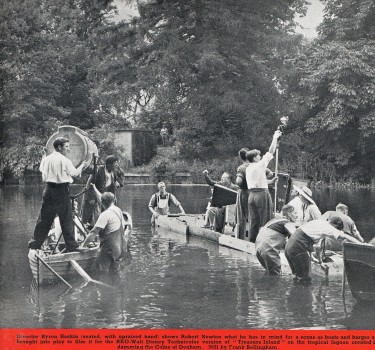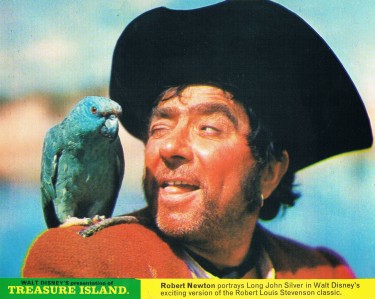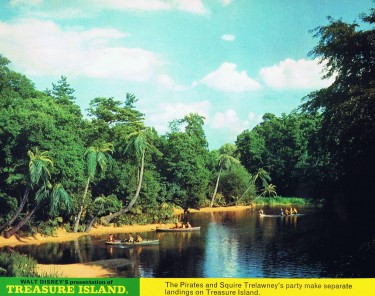To start off this Blog on the films of the fifties, it first seemed that a general view of the whole decade would be the way forward – a decade that took us from Hollywood B movies, through wide screen Cinemascope films which kicked off with the many Biblical epics and those musicals like South Pacific and Carousel then on to Elvis Presley and along the way we saw the brief interlude of 3D – something back in vogue today -all helping the cinema in its battle with the new era of Television which was at that time certainly viewed as a major threat.
However I decided to hit the ground running so to speak with a memorable film from 1950 – Walt Disney’s Treasure Island.
This swashbuckling adventure was the first in a series of British made live-action films, produced with the Studio’s overseas revenue, which was still frozen after the war. It was also the very first feature length film made by Disney without a single animated sequence.
Based of Robert Louis Stevenson’s novel, the film stars Bobby Driscoll as Jim Hawkins, who finds himself lured into the evil machinations of Long John Silver, a part played with great relish by Robert Newton to such an extent that his later film career was effectively defined by this appearance. It was a brilliant portrayal bordering on pantomime and yet he dominates the film even alongside such an illustrious cast list.
Perce Pearce was the producer trusted by Walt Disney in this role and special effects ace turned director Byron Haskin was put in charge of directing the film. With screenplay by Lawrence Watkin, the film is considered to be one of the Disney Studios finest live-action dramas. The film was made in England at Denham Film Studios with lush island exteriors greatly enhanced by Peter Ellenshaw’s magnificent matte painting – a technique used by Walt Disney many times over the next years – and still used today – but always done by Peter who was signed on a lifetime contract in Hollywood to the Disney Studio.
All the excitement and action of the story was brilliantly captured by Freddie Young the Award winning photographer. The film was shot in ‘glorious Technicolor’ with a glossy colour that is still impressive even by todays standards. The memorable scene where the long boat comes into shore from which Jim Hawkins escapes was actually filmed on the lake at Denham with the River Colne having been dammed to raise the water level for the desired effect. Sand and palm trees finished off the stunning scene.
Director Byron Haskin prepares to shoot the above scene. Robert Newton is ready for action in the boat to the left.
The film was released worldwide through RKO Radio and did pretty well at the Box Office. It was released in England on 22 June 1950.


… [Trackback]
[…] Read More to that Topic: filmsofthefifties.com/treasure-island-1950/ […]
… [Trackback]
[…] Information to that Topic: filmsofthefifties.com/treasure-island-1950/ […]